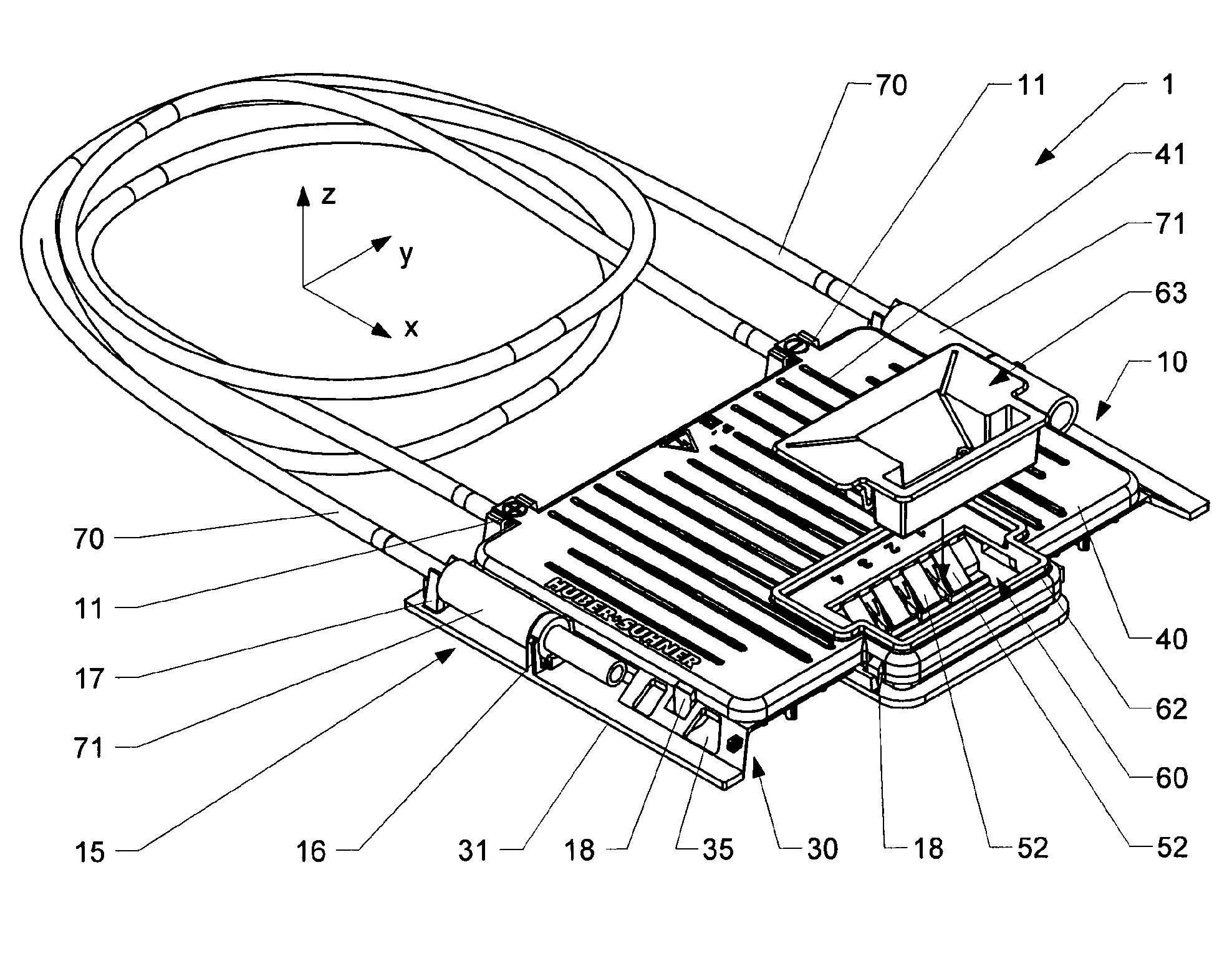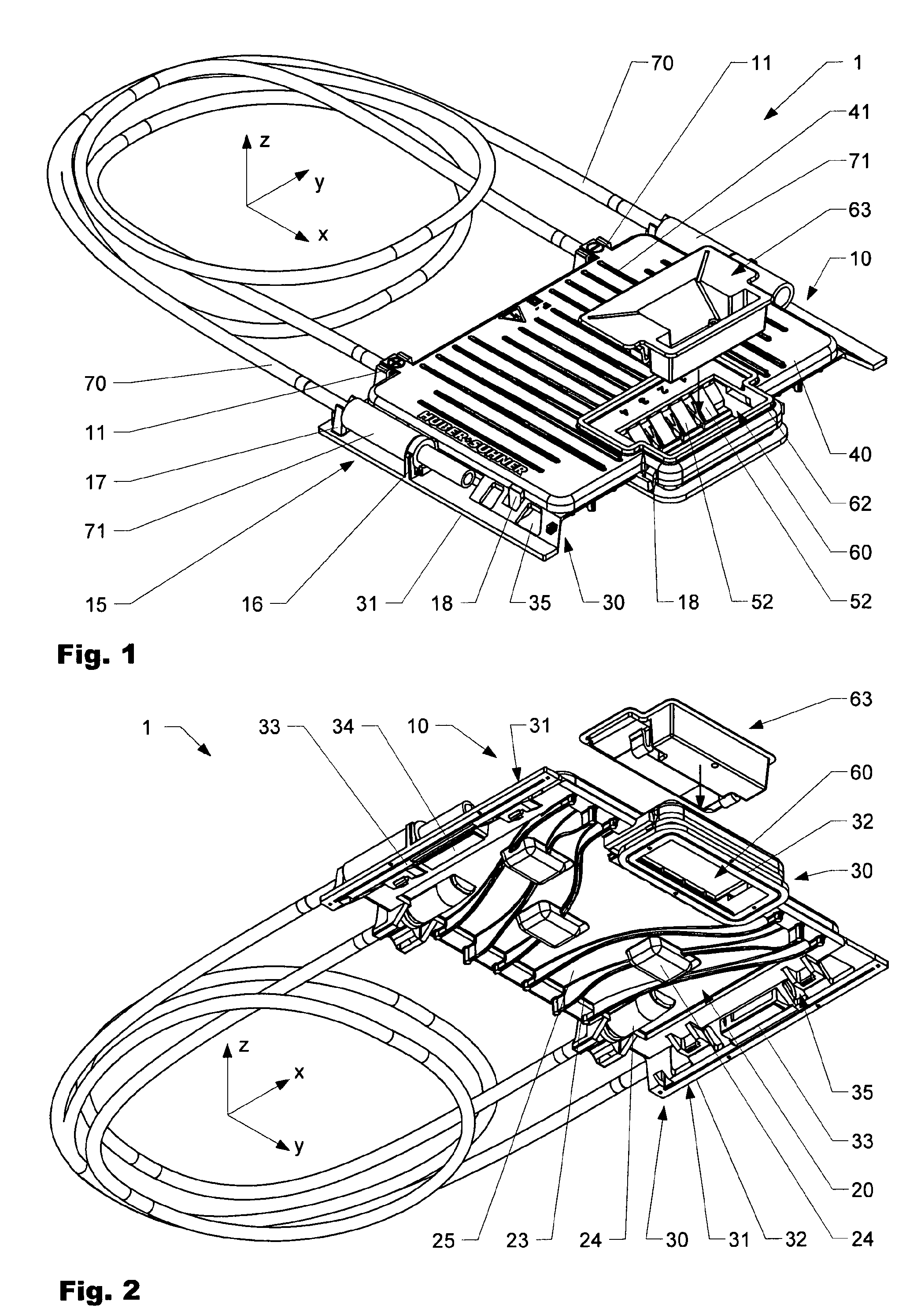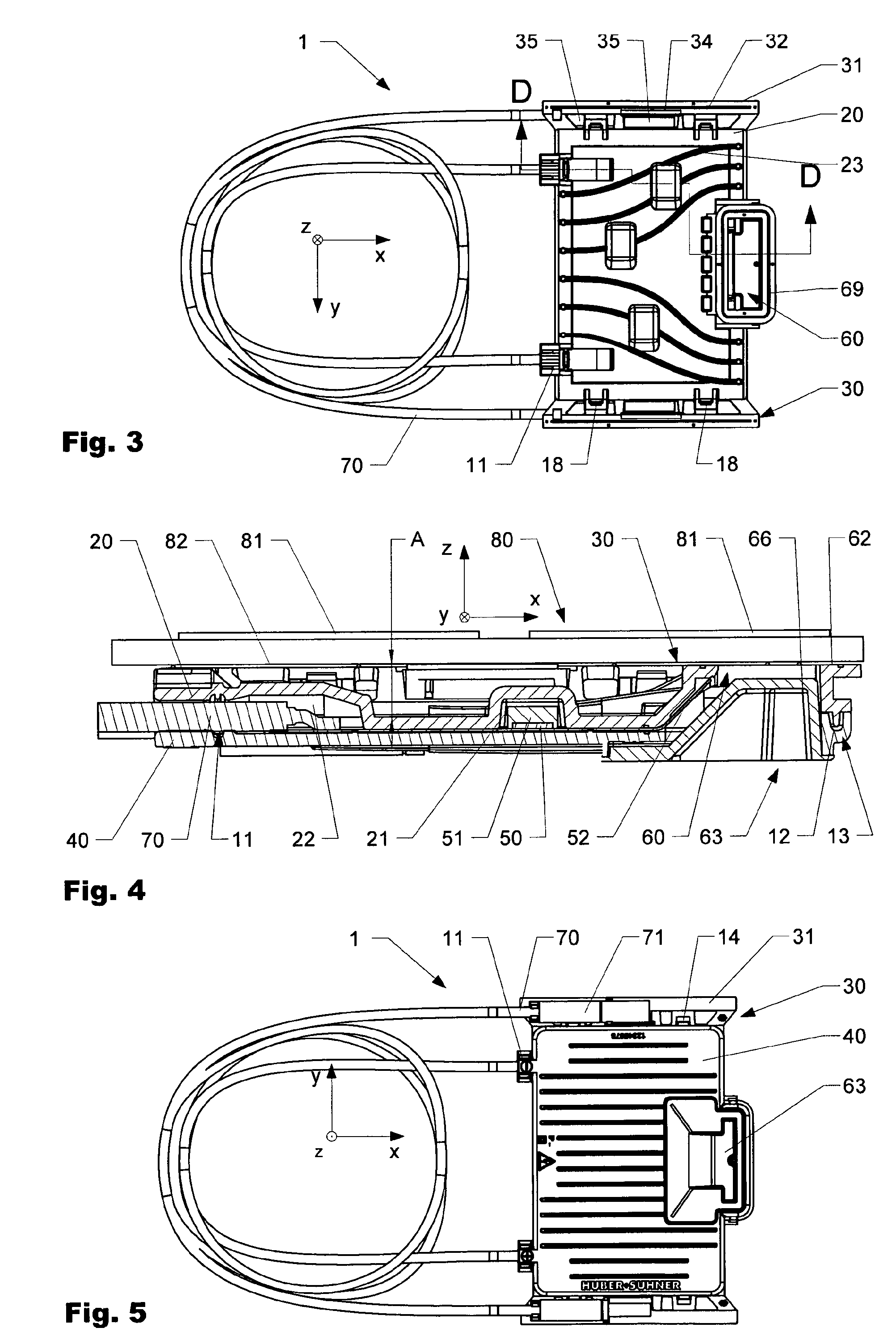Receptacles
a technology of connecting box and solar panel, which is applied in the direction of electrical apparatus construction details, pv power plants, coupling device connections, etc., can solve the problems of reducing the life of solar cells, reducing the electrical energy production of solar cells, and unsuitable for present-day high-power solar cells. , to achieve the effect of preventing heat accumulation, reducing the thermal load between the electronic components of the connecting box and the solar panel, and improving cooling
- Summary
- Abstract
- Description
- Claims
- Application Information
AI Technical Summary
Benefits of technology
Problems solved by technology
Method used
Image
Examples
Embodiment Construction
[0039]FIG. 1 shows a perspective illustration of a connecting box 1 obliquely from the front and above, and FIG. 2 shows the same connecting box 1 obliquely from the front and underneath. FIG. 3 shows the connecting box 1 from underneath, FIG. 4 shows a section illustration (section line DD as shown in FIG. 3) from the side, FIG. 5 shows it from above, and FIG. 6 shows it in the open state, obliquely from above.
[0040]The figures show a housing 10, comprising a housing upper part 40 and a housing lower part 20. The two housing parts 20, 40 are in this case connected to one another, inter alia, by means of snap-action tabs 18, that can alternatively or additionally be adhesively bonded to one another, for example, if required. Feet 31 project at the side from the housing 10 and are part of a mounting cap 30 which is segmented here and projects downwards. The mounting cap 30 is used for the actual attachment of the housing 10 to a surface of a solar panel (neither is illustrated in any...
PUM
 Login to View More
Login to View More Abstract
Description
Claims
Application Information
 Login to View More
Login to View More - R&D
- Intellectual Property
- Life Sciences
- Materials
- Tech Scout
- Unparalleled Data Quality
- Higher Quality Content
- 60% Fewer Hallucinations
Browse by: Latest US Patents, China's latest patents, Technical Efficacy Thesaurus, Application Domain, Technology Topic, Popular Technical Reports.
© 2025 PatSnap. All rights reserved.Legal|Privacy policy|Modern Slavery Act Transparency Statement|Sitemap|About US| Contact US: help@patsnap.com



